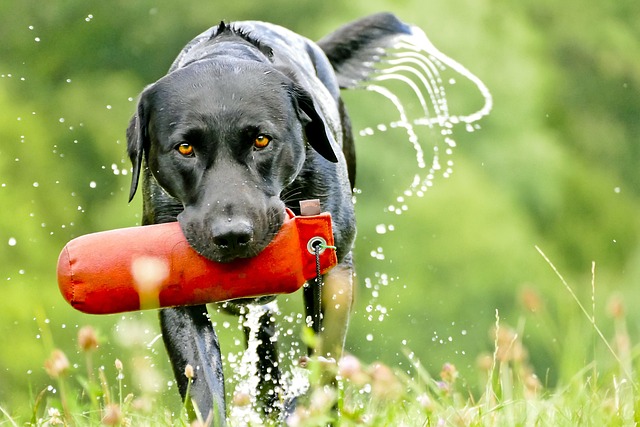
How to crate train a dog with separation anxiety?
Many new dog owners notice the same pattern: grabbing your keys triggers whimpers, paws scratch at the door, and suddenly your pup is in full panic mode.
When we joyfully welcome a dog into our lives, expecting it to become a loyal and well-behaved companion, we may encounter the problem of it not obeying commands. A dog's disobedience is a headache for many owners. However, as long as we use the right methods, show patience and love, guiding the dog to follow the rules is not an unattainable goal.
There are various reasons why a dog doesn't listen to commands. Firstly, it may be due to a lack of effective communication. Dogs and humans don't share the same language, and they rely on the signals we give to understand commands. If the owner's voice varies in volume, the tone is inconsistent, or the words and gestures of the commands are frequently changed when giving instructions, the dog will be as confused as if lost in a fog and find it difficult to understand the owner's intentions. For example, if you tell the dog to "sit" one day, say "Sit down" the next day, and change the gesture randomly the day after, the dog will definitely be confused and not know how to respond.
Secondly, the dog's natural instincts also play a crucial role. Different dog breeds have different personalities and habits. Sled dogs like Huskies are naturally full of energy and have a strong curiosity. When outdoors, all kinds of new things in the outside world can instantly attract their attention, causing them to turn a deaf ear to the owner's commands. And some hounds, such as Beagles, with their keen sense of smell, once they track an interesting scent, they will be immersed in it and find it hard to extricate themselves, and naturally won't pay attention to the owner's call.
Furthermore, the dog's living environment and experiences have a profound impact on its behavior. If a dog has been in a noisy and chaotic environment for a long time, or has been abused or frightened, it may become timid and anxious, and be wary and resistant to the outside world, including the owner's commands. For example, a dog that once lived on the streets and was bullied by other animals may be afraid to approach when the owner calls it, because it is afraid of being hurt again.
 When faced with a dog that doesn't listen to commands, establishing clear communication is crucial. The owner should maintain consistency in commands, choose simple and clear words, and match them with fixed gestures. Every time you give the command "sit", use the same tone and gesture. Over time, the dog will be able to establish a solid connection between the command and the corresponding action. At the same time, in daily life, interact with the dog more, observe its behavior patterns and emotional changes, and understand its "language". For example, wagging its tail may indicate happiness, and drooping its ears may mean it's scared. Only when the two-way communication is smooth will the dog be more likely to obey the owner's commands.
When faced with a dog that doesn't listen to commands, establishing clear communication is crucial. The owner should maintain consistency in commands, choose simple and clear words, and match them with fixed gestures. Every time you give the command "sit", use the same tone and gesture. Over time, the dog will be able to establish a solid connection between the command and the corresponding action. At the same time, in daily life, interact with the dog more, observe its behavior patterns and emotional changes, and understand its "language". For example, wagging its tail may indicate happiness, and drooping its ears may mean it's scared. Only when the two-way communication is smooth will the dog be more likely to obey the owner's commands.
According to the dog's natural instincts, appropriate training strategies should be adopted. For dogs with excessive energy, like Huskies, sufficient exercise is the key. Take it for long walks, runs, or play frisbee games every day to let it release its excess energy. When the dog has exhausted its physical strength, it will be quieter and more docile indoors and more willing to obey the owner's commands. For hounds, their natural instincts can be utilized for training. For example, use scent tracking games and incorporate commands during the game. When the dog obeys the commands and completes the task, give generous rewards. In this way, it not only meets their natural needs but also strengthens their obedience to commands.
Improving the dog's living environment is also essential. Create a quiet, comfortable, and safe space for the dog so that it can rest and play at ease. Set up a special dog bed at home, put a soft mat and its favorite toys on it. If the dog has had a bad experience, the owner should give more patience and love, and gradually eliminate the fear in its heart with a gentle voice and soft strokes. For example, when the dog is afraid to approach, the owner should not force it but slowly squat down and extend a hand for the dog to sniff actively, gradually building trust.
During the process of training the dog, the application of rewards and punishments should be appropriate. Rewards are an effective means to stimulate the dog's enthusiasm. When the dog obeys the command and makes the correct action, immediately give it its favorite snacks, toys, or enthusiastic praise and strokes. In order to get the reward again, the dog will try harder to obey the commands. However, punishments need to be implemented with caution. Absolutely do not use violent means, such as beating or scolding the dog. This will not only make the dog feel scared and painful but also may damage the trust relationship between it and the owner. When the dog makes a mistake, a temporary isolation method can be used. For example, put it in a separate small space for a few minutes to let it understand that this kind of behavior is not allowed.
A dog's disobedience is a complex issue that requires the owner to deeply understand the reasons and use scientific and reasonable methods for training and guidance. In this process, patience and love are the most powerful weapons. Every interaction with the dog is an opportunity to deepen the relationship and establish a good bond. As long as we persevere and nourish it with love, the dog that once didn't listen to commands will eventually become the most intimate and obedient companion by our side.

Many new dog owners notice the same pattern: grabbing your keys triggers whimpers, paws scratch at the door, and suddenly your pup is in full panic mode.

Finding little surprises around the house is part of puppy parenthood, but that doesn’t mean it has to last. A new pup doesn’t know your rules—they’re still figuring out their own body signals, let alone where to go when nature calls.

Teddy bear puppies, with their squishy faces and fluffy coats, melt hearts easily—but when it comes to potty training, their cute exterior doesn’t always translate to smooth sailing.

That stubborn moment when your dog plants all four paws like a furry statue during your neighborhood stroll - while frustrating, this behavior usually signals something deeper than

That moment when you're trying to navigate your narrow apartment hallway and your Golden Retriever becomes an immovable furry roadblock

Dogs are creatures of habit, and when they start using their crate as a bathroom, it’s usually a sign something’s off in their routine or environment.